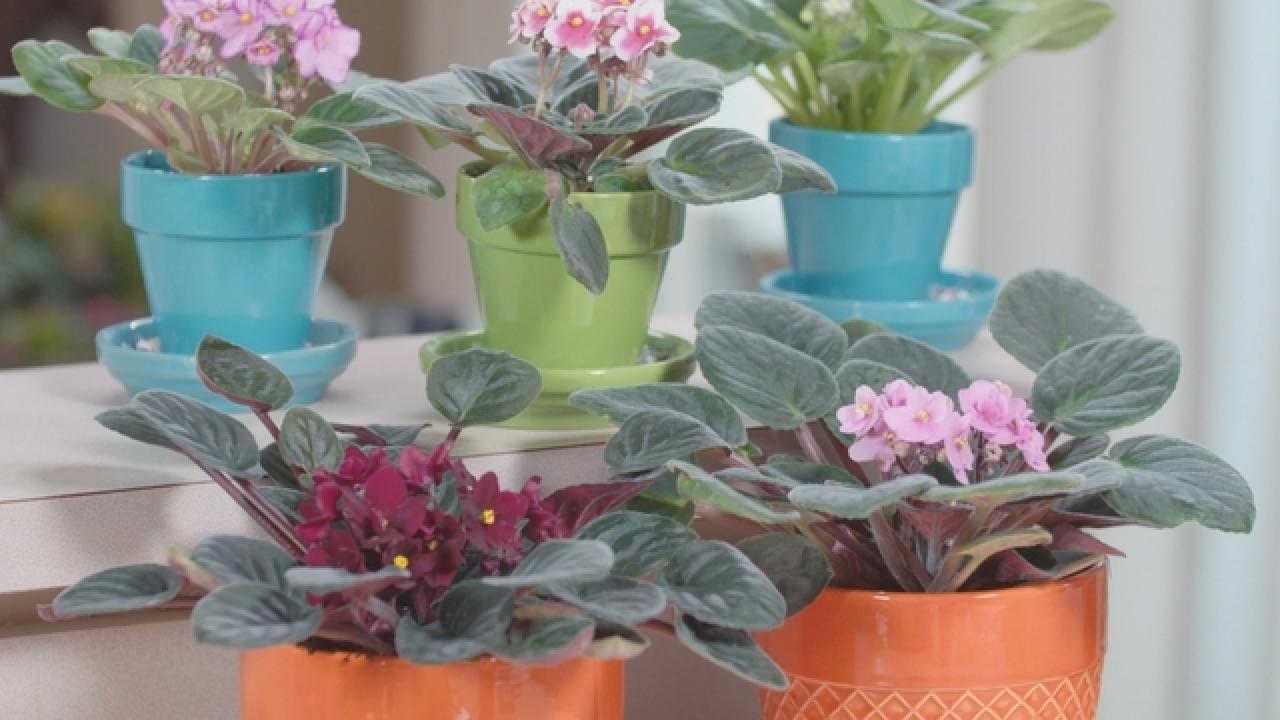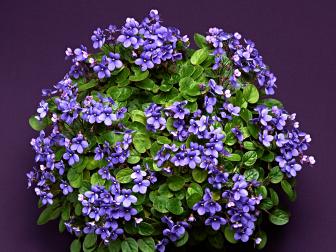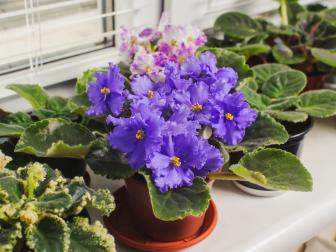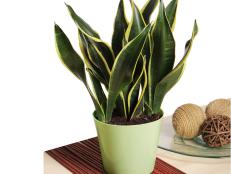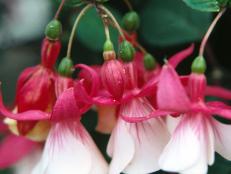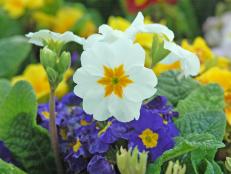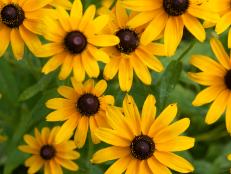How to Care for Your African Violet
African violets have been among the world's most popular houseplants for more than a century. Here's how to take care of these exotic tropical beauties.

African violets are one of the most popular houseplants of all time. They’ve been popular in the United States for nearly a century. Your grandmother probably grew African violets. Maybe even your great-grandmother.
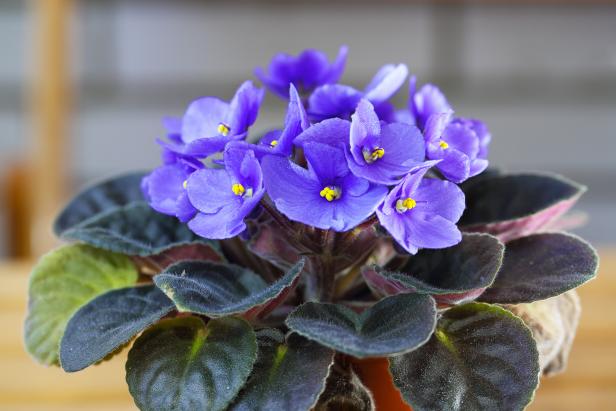
Shutterstock/Vadym Lavra
African violets are small plants with fuzzy leaves that produce clusters of white, blue or purple flowers. They’ve been grown as houseplants since the 19th century, when Baron Walter von Saint Paul, a colonial official stationed in Africa, sent specimens of the Tanzania natives to his father in Germany. The exotic little plants were a hit, and soon African violets were a must for plant lovers all over Europe. African violets exploded in popularity in the United States in the 1920s, when a California grower began marketing a slew of hybrids. Read on to learn how to grow African violets in your digs.
13 Types of African Violets 13 Photos
These popular houseplants come in an astonishing array of colors, sizes and bloom types. With hundreds of new varieties and hybrids available, these aren't your grandma's violets.
African Violet 101
African violets come in an amazing variety of shapes, sizes and colors. Flowers can be single, double or semi-double; have ringed or ruffled petals; and appear as blue, purple, lavender, red, pink, magenta, burgundy, crimson, white or bi-colored. Some have variegated foliage or flowers. There are nine species of African violets, eight subspecies and hundreds of varieties and hybrids. But they’re classified generally by size, based on how wide the plant reaches at maturity: Miniature, less than 8 inches across, with flowers that are .75 inches across; standard, 8 to 16 inches across with flowers that are 2 inches across; and large, plants more than 16 inches across with 3-inch flowers.
Botanical Name: Saintpaulia
Common Names: African violet
Hardiness Zones: Houseplant
Bloom Time: Varies
Planting African Violets
Plant violets in an actual African violet potting mix or any light, loose, fast-draining potting mix that’s 30 to 50 percent perlite or vermiculite. You can mix up your potting soil, too.
Keep them planted in small pots and re-pot once a year to give then fresh, nutrient-rich soil. Keeping them a little root bound will encourage them to bloom.
Caring for African Violets
African violets are easy to grow if you play by their rules. The key to keeping them happy is giving them the conditions they’d get in their native jungle: humidity, damp soil and lots of bright, filtered light.
Best Houseplants for College Life
Find an easy-care plant that truly interests you. Yes, African violet is a good option.
African violets do best with 10+ hours of bright, filtered light. Never give them direct sun; they’ll scorch.
Keep soil moist but well drained. You want moist, not soggy.
Water from the bottom, not the top. To do this, set the potted violet in a dish filled with water as long as it takes for the soil to become fully moist. Watering from the top with water that’s too hot or cold can cause leaf spots.
PRO TIP: Let tap water sit for two days so chlorine evaporates from it before watering violets with it. They’re sensitive to chemicals in tap water and prefer water at room temperature, not chilled. You can also catch rainwater and use that to give your violets a drink.
Violets love high humidity. Give it to them by placing the violets’ pot in a saucer filled wtih pebbles and a bit of water. You want the bottom of the pot out of the water so the soil doesn’t get sodden, hence the pebbles. You can also use a special violet pot that comes with its own well you can keep filled with water.
Fertilize them every two weeks during spring and summer with a balanced fertilizer formulated for African violets. Skip bloom boosters; they’re hard on the plants.
They like a warm house, 65 to 75 degrees during the day, with a 5 to 10-degree temperature drop at night. Remember, think jungle.
Keep them away from drafty windows and doors in the winter.
Propagation
The easiest way to grow a new African violet is with a leaf cutting. Here’s how:
- Choose a healthy, middle-aged leaf from the middle of the plant.
- Cut it with a sharp knife, leaving 1.5 inches of stem.
- Stick the leaf stem into a potting mixture made with lots of vermiculite or perlite. Use a soilless rooting mixture to eliminate the risk of soil-borne fungus infecting the leaf.
- Keep the rooting or potting mix moist and place it in bright, indirect light.
In about six weeks, you'll see clumps of tiny plantlets form at the base of the leaf, where it meets the soil. - When the baby plants have at least 4 leaves, separate them from the plant and pot them up, with their tiny roots in the soil.
PRO TIP: Use tweezers. Those plants are tiny and their root systems are delicate.
Pests and Problems
Cyclamin mites can strike. They’re near impossible to eradicate and spread quickly to nearby plants, so throw out infected plants.
Powderly mildew. Remove infected leaves. Lower humidity and increase air circulation to control the mildew.
Rot and blight. Overwatering causes this. Once it starts, your plant cannot be saved.
Thrips are tiny and feed on pollen. Rinse them off with mild, soapy water.
Mealybugs look like white masses on the plant. Those are clusters of bug eggs. Dab them with swabs dipped in alcohol or spray with a mixture of neem oil and liquid Castille soap. If you don’t get the mealys under control, throw out the infected violet so the bugs won’t spread to your other plants.
Recommended Varieties
Artist’s Palette is a series of standard-size African violet hybrids with bi-color blooms produced in the 1990s by Optimara. There are 16 types, all named for famous artists, that come in a range of flower types and colors. ‘Picasso’ is a single violet with pink bicolor blooms splashed with purple; ‘Cezanne’ has frilled pink flowers speckled with purple; ‘Hiroshige’ has semi-double flowers in blue and white; and ‘O’Keeffe’ has white, star-shaped flowers with a purple edge.
'Everfloris’ Space Violets are standard size African violets grown from hybridized seeds that took a six-year trip into space on a NASA satellite. The trip exposed them to high-energy cosmic rays, mutating them and boosting their metabolism, making them larger. They’re the first everblooming African violet. There’s a whole series of these violets in a range of colors and bloom types. Houseplants that came from outer space. How can you resist?
'Pueblo’ is a large African violet with deep green leaves and hot pink flowers.
‘Jolly Texan’ is a semi-miniature with dark red, pansy-type blooms.
'Rob’s Rinky Dink’ is a miniature with purple blooms. It's teeny, with flowers less than a half-inch across.
